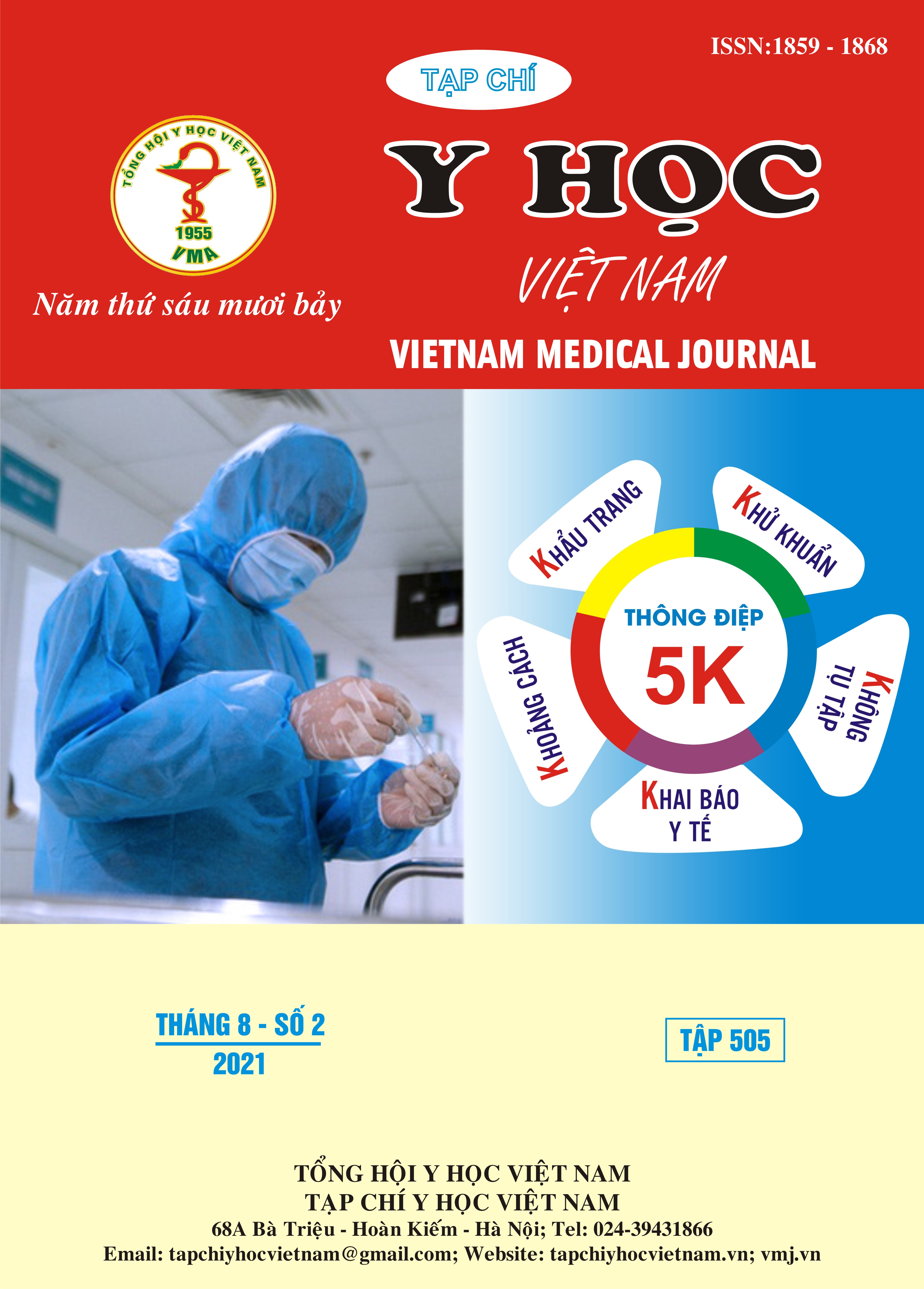EVALUATION OF THE RESULTS BIPOLAR TRANSURETHRAL RESECTION OF THE PROSTATE IN PATIENTS TREATMENT BENIGN PROSTATIC HYPERPLASIA WITH CARDIOVASCULAR DISEASE
Main Article Content
Abstract
Purpose: To evaluation of the results bipolar transurethral resection of the prostate in patients treatment benign prostatic hyperplasia with cardiovascular disease. Materials and methods: A retrospective and prospective study was carried out on 63 patient who were diagnosed with benign prostatic hyperplasia with cardiovascular disease underwent bipolar transurethral resection of the prostate from 01/2019 to 05/2021 at the Department of Urology of Hanoi Medical University Hospital. All the data of patient including clinical and subclinical signes were collected and analyzed. Results: Mean age of the patient was 73.5±9.1 years. Accompanying cardiovascular disease: hypertension 73%, arrhythmia 19.1%, coronary heart disease 9.5%, pacemaker 6.4%, eight patients taking anticoagulants. IPSS and QoL score preoperative of patients were 22.5 ± 3.8 and 4.6 ± 0.7 respectively, prostate weight was 68.3 ± 31.8g, ejection fraction (EF) on echocardiography was 68.9 ± 6.0%. The mean operative time was 55.3 ± 21.4 min, the mean hospital stay was 6.4 ± 2.0 days. No patients had complications during surgery, angina, shortness of breath or cardiovascular intervention. There were 3 patients had postoperative complications: two of bleeding, one of leg pain on both sides, all were treated medically and had good results. One-month follow-up, there were no cases requiring hospitalization for cardiovascular disease. One patient died from chronic obstructive pulmonary disease. Conclusions: Bipolar transurethral resection of the prostate is a safe and effective method for the treatment in patients of benign prostatic hyperplasia with cardiovascular disease.
Article Details
Keywords
transurethral resection of the prostate in saline (TURIS), bipolar transurethral resection of the prostate (B-TURP), Benign prostatic hyperplasia
References
2. Cleves A., Dimmock P., Hewitt N., et al. (2016). The TURis System for Transurethral Resection of the Prostate: A NICE Medical Technology Guidance. Appl Health Econ Health Policy, 14(3), 267–279.
3. Eagle K.A., Berger P.B., Calkins H., et al. (2002). ACC/AHA guideline update for perioperative cardiovascular evaluation for noncardiac surgery--executive summary: a report of the American College of Cardiology/American Heart Association Task Force on Practice Guidelines (Committee to Update the 1996 Guidelines on Perioperative Cardiovascular Evaluation for Noncardiac Surgery). J Am Coll Cardiol, 39(3), 542–553.
4. Albanesi L., Attisani F., Gentile B.C., et al. (2013). Comparative randomized study on the efficaciousness of endoscopic bipolar prostate resection versus monopolar resection technique. 3 year follow-up. Arch Ital Urol Androl, 85(2), 86–91.
5. Stucki P., Marini L., Mattei A., et al. (2015). Bipolar versus monopolar transurethral resection of the prostate: a prospective randomized trial focusing on bleeding complications. J Urol, 193(4), 1371–1375.
6. Vasudeva P., Kumar N., Kumar A., et al. (2019). Impact of monopolar TURP, bipolar TURP and photoselective vaporization of prostate for enlarged prostate on erectile function. Low Urin Tract Symptoms, 11(1), 24–29.
7. Trần Văn Hinh, Đỗ Ngọc Thể (2012). Đánh giá hiệu quả bước đầu của cắt đốt lưỡng cực tuyến tiền liệt qua nội soi niệu đạo. Y Dược lâm sàng 108 - 2013 - no.1 - tr.66-70 - ISSN.1859-2872. .
8. Batra Y.K. and Bali I.M. (1978). Effect of coagulating and cutting current on a demand pacemaker during transurethral resection of the prostate. A case report. Can Anaesth Soc J, 25(1), 65–66.
9. Kellow N.H. (1993). Pacemaker failure during transurethral resection of the prostate. Anaesthesia, 48 (2), 136–138.


